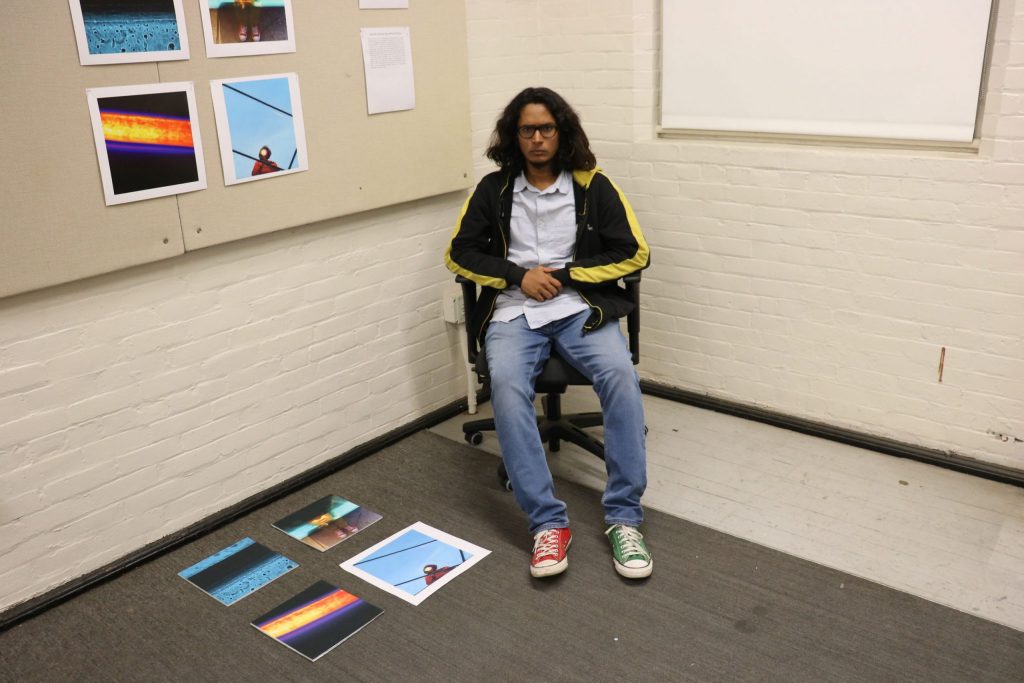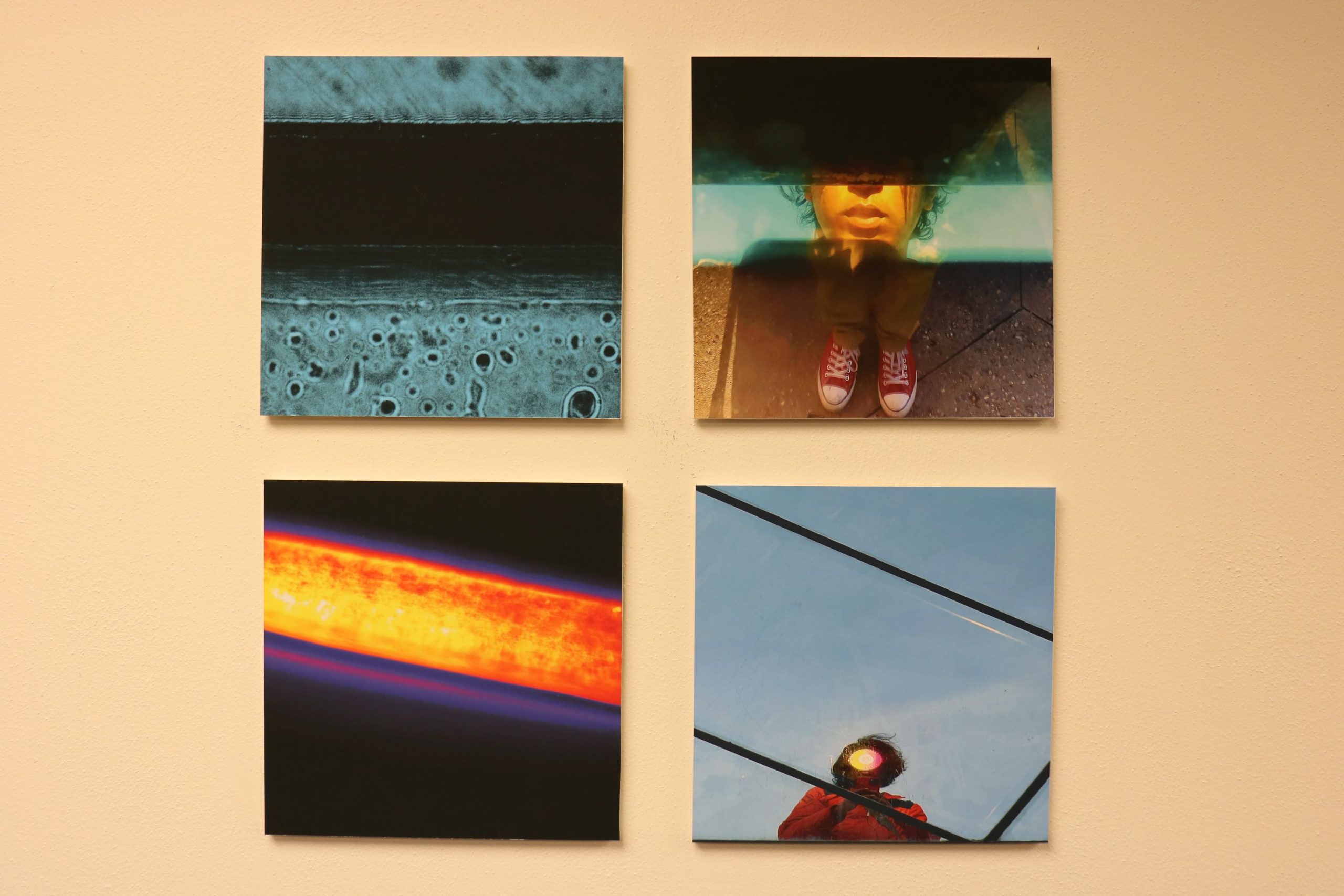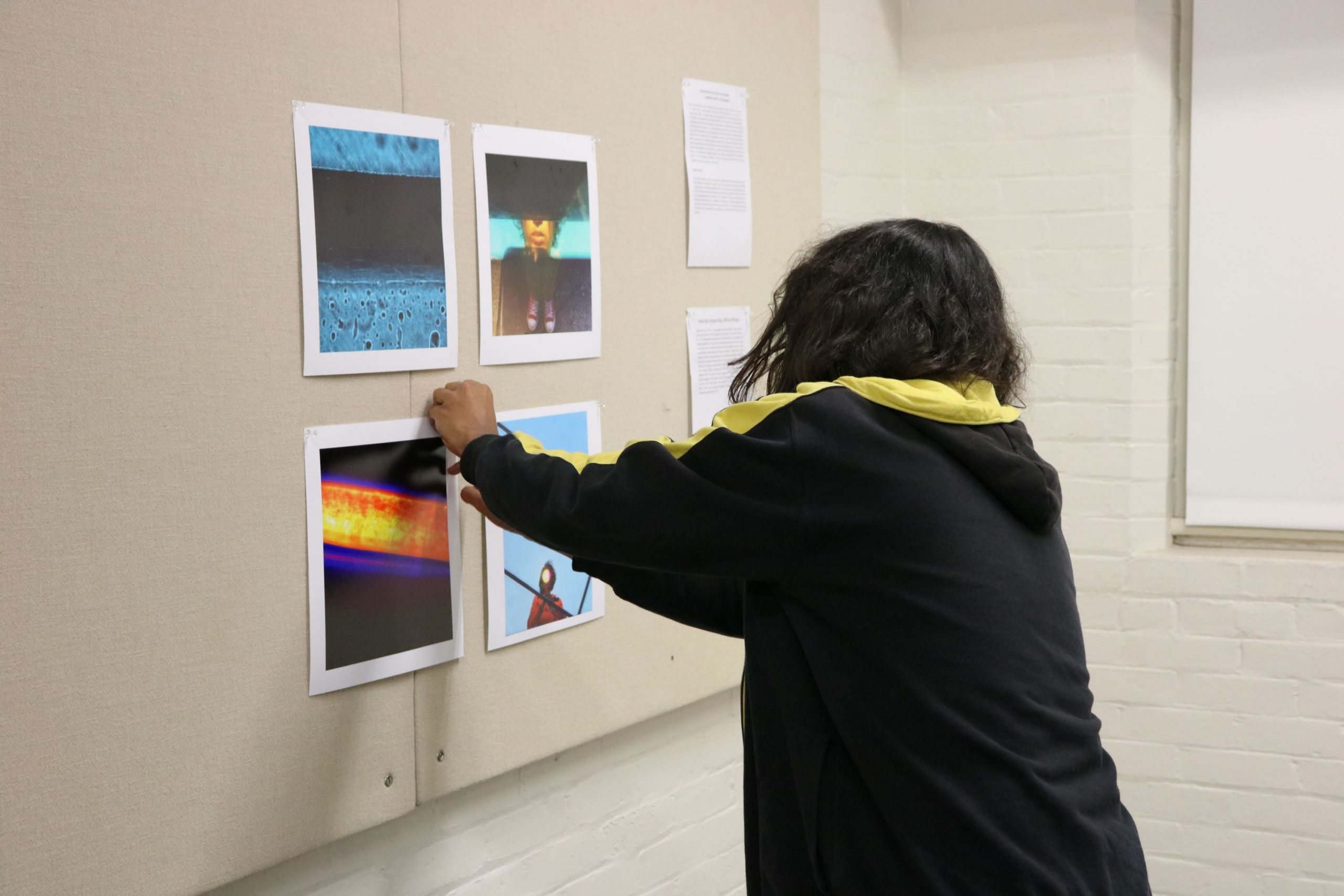SU student Anshul Roy creates Bird Library exhibit using bio-art themes
SU student creates ‘A Self-Portrait of the Artist as a Young Man'

Anshul Roy bled for his art — literally. While creating work for his bio-art class last spring, the Syracuse University master’s student pricked his finger, put the blood sample on a test slide, and snapped a picture of it using a microscope.
The image is now one of 12 used in his collection, “A Self-Portrait of the Artist as a Young Man.” Inspired by bio-art, a type of artform that blends both art and biology together, Roy utilized different forms of self-portraits to capture himself on both macroscopic and microscopic levels. The photography series will hang in Bird Library’s Biblio Gallery until Oct. 14.
“When I saw the visual similarity and contrast between the structures in the organic world and the man-made world, I was very interested,” Roy said. “I’m always about geometric forms and shapes, and when I saw [them] under the microscope, I was so amazed and spellbound.”
Roy taught himself photography using a Nikon DSLR that was originally an unused gift for his dad. While attending the Indian Institute of Technology in Kanpur, Roy said he got involved so deeply in the craft that he would roam for four-to-five hours daily doing “photo walks” and taking pictures of the streets. He also joined his school’s photography club.

Wanting to eventually combine his passion for art with a future teaching career, Roy decided to pursue a master’s degree at SU. Roy said he enrolled in a bio-art course because he wanted to see how both science and art could be merged together.
The class was originally formed by two SU associate professors: Heidi Hehnly, who teaches biology, and Boryana Dragoeva, a bio-artist who teaches video art in VPA. The two have held bio-art mixers at SU since 2018, center the course by teaching the topic via both lectures and labs.
Dragoeva said Roy initially came to the class passionate about mixing architecture, photography and biological themes. But during labs, Roy began to experiment with taking snaps of himself on a microscopic level.
Roy peeled dead skin off his finger, tore off strands of his hair and pricked himself to draw blood for samples that were put on test slides. He then took pictures of the slides using a Leica microscope. Over time, Hehnly saw that Roy’s work was turning out to be something different than what he originally intended.
“I remember talking to him, and I was just like ‘This is almost like a self-portrait of you,” Henhly recalled. “And he built it up from there.”
To add to a “macro” scale to his work, Roy compiled self-portraits he took in places such as Miami and Washington D.C., and put images that looked similar to each other side-by-side for his collection. His work was eventually presented alongside other bio-art students during a two-week exhibit in April entitled “Chimera: An Exhibition of Bio-Art.”
“It showed me that [a] scientific image could be more than just science,” Roy said about the bio-art class. “[That art] could be recontextualized in some other way to raise more interesting questions and, hopefully, communicate messages to a broader audience in a visually appealing way.”

Last Thursday, Roy pinned up his collection at his studio in Smith Hall and took a step back to scan his work. Roy plans on adding four more photos to the display, using molecular imaging for the collection’s next additions, which will be featured at the Indian Institute of Technology in Jan. 2023.
But even at a ‘micro’ or ‘macro’ level, Roy said he just wants his work to be aesthetically pleasing for whoever looks at it. He hopes “A Self-Portrait of the Artist as a Young Man” does just that.
“The biggest gift a photographer can give to a viewer is beauty in little-appreciated things or a new way of looking at the world,” Roy added. “That’s the beauty of photography.”





